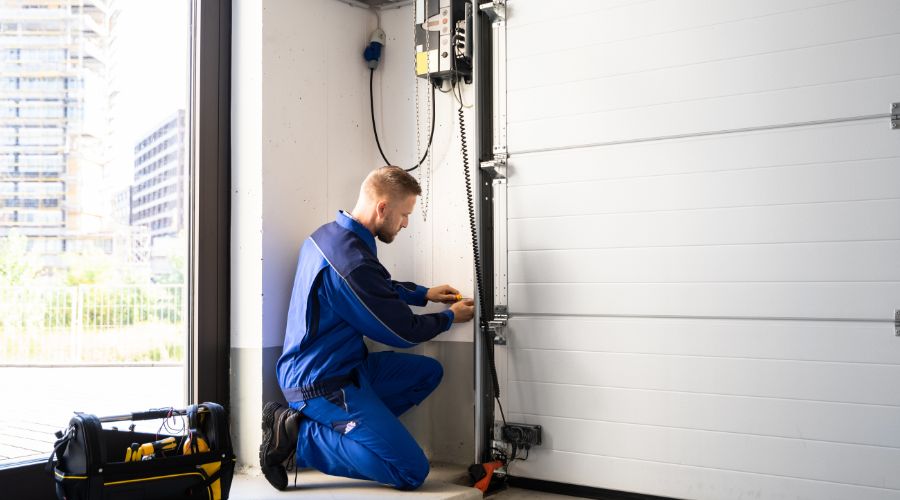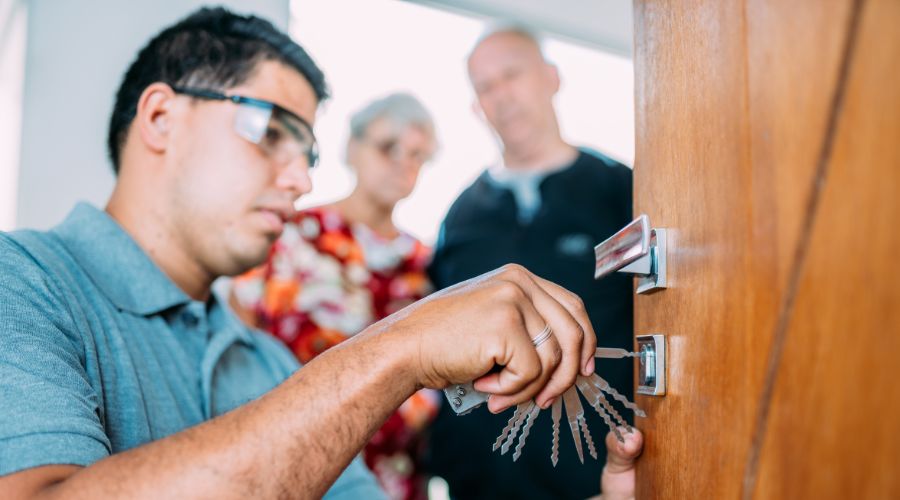Sliding glass doors are a popular choice for many homeowners due to their aesthetic appeal and functionality. However, ensuring that your sliding glass door lock is secure is essential for home safety. Over time, these locks can encounter various issues, such as becoming stuck, loose, or even jammed. In this guide, we’ll walk you through the steps to repair a sliding glass door lock, providing tips, tools, and troubleshooting advice along the way.
Importance of a Secure Sliding Glass Door Lock
A secure sliding glass door lock is crucial in protecting your home from potential break-ins. It also ensures that your door functions properly, providing peace of mind for you and your family. However, like any other lock, sliding glass door locks can wear out or malfunction over time.
Common Issues with Sliding Glass Door Locks
- Lock is stuck or jammed: The lock may become difficult to turn or completely unresponsive.
- Lock is loose or wobbly: Over time, the screws holding the lock may become loose, causing the lock to feel unstable.
- Key won’t turn in the lock: This can be due to a worn-out key or internal damage within the lock mechanism.
- Lock mechanism is broken or worn out: Continuous use can lead to wear and tear, necessitating repair or replacement.
Overview of the Repair Process
Repairing a sliding glass door lock involves identifying the issue, gathering the necessary tools, and following a step-by-step guide to fix the problem. Whether you need to tighten screws, lubricate the lock, realign the door, or replace the lock entirely, this guide will provide you with the knowledge to complete the task.
Identify the Problem
Common Problems with Sliding Glass Door Locks
Understanding the specific problem with your sliding glass door lock is the first step in repairing it. Below are some common issues and how to recognize them:
- Lock is stuck or jammed: The key doesn’t turn, or the lock doesn’t respond when you try to engage or disengage it.
- Lock is loose or wobbly: The lock feels shaky when touched, and there may be visible gaps between the lock and the door.
- Key won’t turn in the lock: The key may be difficult to insert or remove, or it won’t turn at all.
- Lock mechanism is broken or worn out: The lock may not function smoothly, and you might notice visible signs of wear.
Tools Needed for Diagnosis
Before starting the repair, gather the following tools:
- Screwdrivers: For tightening or removing screws.
- Pliers: Useful for gripping and pulling components.
- Lubricant: To ensure the lock mechanism operates smoothly.
- Replacement parts (if necessary): In case the lock or its components are beyond repair.
Step-by-Step Repair Guide
In this section, we’ll guide you through each step of repairing your sliding glass door lock. Whether you’re dealing with a stuck lock, loose screws, or a misaligned door, these clear and detailed instructions will help you troubleshoot and fix the problem, ensuring your lock functions smoothly and securely. here are given following steps for lock repair.
Step 1: Inspect the Lock
- Check for visible damage: Examine the lock for any obvious signs of wear or damage, such as rust or cracks.
- Test the lock mechanism: Try locking and unlocking the door to identify any resistance or unusual behavior.
- Determine if the issue is with the lock or the door alignment: If the lock appears to function but the door doesn’t close properly, the problem may be with the door alignment rather than the lock itself.
Step 2: Tighten or Replace Screws
- Identify loose screws: Examine the screws holding the lock in place. Loose screws can cause the lock to become misaligned or wobbly.
- How to tighten screws effectively: Use a screwdriver to firmly tighten any loose screws, ensuring the lock is securely attached to the door.
- When to replace screws with new ones: If the screws are stripped or damaged, replace them with new ones to ensure a secure fit.
Step 3: Lubricate the Lock
- Types of lubricants suitable for door locks: Use a graphite or silicone-based lubricant, as these are specifically designed for locks.
- How to apply lubricant properly: Spray or apply the lubricant into the keyhole and lock mechanism, then insert and turn the key several times to distribute the lubricant evenly.
- The importance of regular maintenance: Regularly lubricating your sliding glass door lock can prevent issues like sticking or jamming and extend the life of the lock.
Step 4: Realign the Door
- Signs of a misaligned door: If the door doesn’t slide smoothly or doesn’t align with the frame when closed, it may be misaligned.
- How to adjust the door alignment: Use a screwdriver to adjust the screws on the door’s rollers, which can help realign the door with the frame.
- Tools needed for realignment: A screwdriver and possibly a level to ensure the door is properly aligned.
Step 5: Replace the Lock (If Necessary)
- When to consider replacing the lock: If the lock is severely damaged or worn out, replacing it may be the best option.
- How to choose a replacement lock: Look for a lock that is compatible with your door model and provides the level of security you need.
- Step-by-step guide to removing and installing a new lock:
- Remove the old lock by unscrewing it from the door.
- Align the new lock with the existing holes and screw it into place.
- Test the new lock to ensure it functions properly.
Safety Precautions
- Handling tools safely: Always use tools as directed and wear protective gear if necessary.
- Ensuring the door is secure during repairs: Keep the door closed or have someone hold it in place to prevent it from moving while you work.
- Avoiding common mistakes: Take your time with each step to avoid errors that could cause further damage to the window lock or door.
Troubleshooting Tips
- What to do if the lock still doesn’t work after repair: Double-check your work for any missed steps or loose components. If the issue persists, the lock may need to be replaced.
- How to deal with a broken key in the lock: Use pliers to carefully remove the broken key from the lock. If you can’t remove it, consider calling a professional.
- When to call a professional locksmith: If you’re unable to repair the lock yourself or if the problem is complex, it’s best to contact a professional locksmith.
 Maintenance Tips for Sliding Glass Door Locks
Maintenance Tips for Sliding Glass Door Locks
- Regular cleaning and lubrication: Keep the lock clean and lubricated to prevent issues like sticking or jamming.
- Periodic checks for wear and tear: Regularly inspect the lock for signs of wear and address any issues immediately.
- How to prevent common issues: Avoid slamming the door and ensure it is properly aligned to reduce stress on the lock.
Maintaining a secure and functional sliding glass door lock is essential for the safety and convenience of your home. By identifying and addressing common issues such as stuck, jammed, or loose locks, you can ensure your door operates smoothly and securely. Whether you’re tightening screws, lubricating the mechanism, or realigning the door, the steps outlined in this guide provide a clear path to restoring your lock’s functionality.
Regular maintenance, including cleaning and lubrication, is key to preventing future problems and extending the life of your lock. However, if the lock is beyond repair or you’re unsure about tackling the issue yourself, don’t hesitate to replace it or seek professional help.
For expert assistance with sliding glass door locks or any other lock-related issues, trust Astoria Locksmith. Our team is ready to help you with all your lock repair and replacement needs, ensuring your home remains safe and secure.
- Change A Lock On A Door
- Replace A Door Lock
- Lock Repair Near Me
- Broken Door Knob
- Door Lock Jammed
- Fixing Door Lock
- How To Repair Door Lock
- Replace A Door Lock
Contact us Today at (718) 440-9204
If you’re experiencing issues with your sliding glass door lock and need assistance, contact Astoria Locksmith. We offer professional lock repair services and can help you with any door lock problems.
FAQs
1. How do I change a lock on a door?
To change a lock on a door, start by removing the old lock, then install the new lock by following the manufacturer’s instructions. Ensure it fits properly and functions smoothly.
2. When should I replace a door lock?
Replace a door lock if it’s damaged, outdated, or no longer provides adequate security door lock. Consider upgrading to a more secure option if needed.
3. Where can I find lock repair near me?
You can find lock repair services near you by searching online or contacting a local locksmith like Astoria Locksmith for professional assistance.
4. How do I fix a broken door knob?
To fix a broken door knob, first, remove the knob and inspect the internal components. Replace any broken parts and reassemble the knob securely.
5. What should I do if my door lock is jammed?
If your door lock is jammed, try lubricating the lock with a suitable product. If that doesn’t work, consider disassembling the lock to remove any obstructions or replacing it.
6. How do I go about fixing a door lock?
Fixing a door lock involves diagnosing the issue, tightening screws, lubricating the mechanism, or replacing worn-out parts. Follow a step-by-step guide to ensure proper repair.
7. How do I repair a door lock myself?
To repair a door lock yourself, identify the problem, gather the necessary tools, and follow the steps for tightening, lubricating, or replacing the lock as needed.
👉 Click Here Key Cutting Price List 2024









